I had an early breakfast with my husband in the hotel and then met my guide, Prema Kumar, in the hotel lobby to begin our day exploring the city. As we were driving to our first point of interest, Prema gave me a brief history lesson.
Bangalore is the capital and largest city of the state of Karnataka located in South West. It was created on 1 November 1956, with the passage of the States Reorganization Act. (Prior to this date, India was under British rule). Originally known as the State of Mysore, it was renamed Karnataka in 1973. Karnataka is bordered by the Arabian Sea and the Laccadive Sea to the west, Goa to the north west, Maharashtra to the north, Telangana to the North east, Andhra Pradesh to the east, Tamil Nadu to the south east, and Kerala to the south west. The state covers an area of 191,976 square kilometers, or 5.83 per cent of the total geographical area of India. It is the Seventh largest Indian state by area. With 61,130,704 inhabitants at the 2011 census, Karnataka is the eighth largest state by population, comprising 30 districts. Kannada is the most widely spoken and official language of the state. The word Karnataka means “elevated land”. The city of Bangalore has a population of approximately 8,425,970 people, which ranks it India’s third largest city next to Mumbai at 18,414,288 total metropolitan area and Delhi at 16,314,838.
This was all very interesting to me, but what I found more fascinating was the history of the Kingdom of Mysore. Even though India’s recorded history dates back 5000 years, The Kingdom of Mysore (which included over time the area of Karnataka) dates back to 1399.
Maharaja of Mysore was the principal title of the ruler of the Kingdom of Mysore in India. The Wodeyar dynasty founded a feudatory principality in 1399, which grew into the Kingdom of Mysore. The Wodeyar ruled that kingdom almost uninterruptedly between 1399 and 1947; they ruled initially as vassals of the Vijayanagara Empire (1399-1565), then as independent rulers (1565-1761), then as puppet rulers under Hyder Ali and Tipu Sultan (1761-1796) and finally as allies of the British crown (1799-1947). The Wodeyars of Mysore is the only Indian Royal family in the 5000-year-history of India (right from the times of Ramayana) to have ruled a kingdom for more than 500 years. During these 650 years, 26 Kings have ruled this part of India. In 1950 the Monarchy was abolished. Titular (existing in title only) monarchy followed from 1950 to present. Three more Wodeyars, Jayachamaraja (1950-1974), his son, Srikanta Wodeyar (1974-2013) and his nephew, Kantharaja Urs Wodeyar (2013-present) have kept the royal traditions going.
Our first stop was the Vidhana Soudha. The Vidhana Soudha, located in Bengaluru, is the seat of the state legislature of Karnataka. It is an imposing building, constructed in a style sometimes described as Mysore Neo-Dravidian, and incorporates elements of Indo-Saracenic (also known as Indo-Mughul and popular with architects during British India rule), and Dravidian styles (layer upon layer, generally stone, with each layer a little bit smaller than the preceding layer). The construction was completed in 1956. This building was huge and we could only view it from the outside.
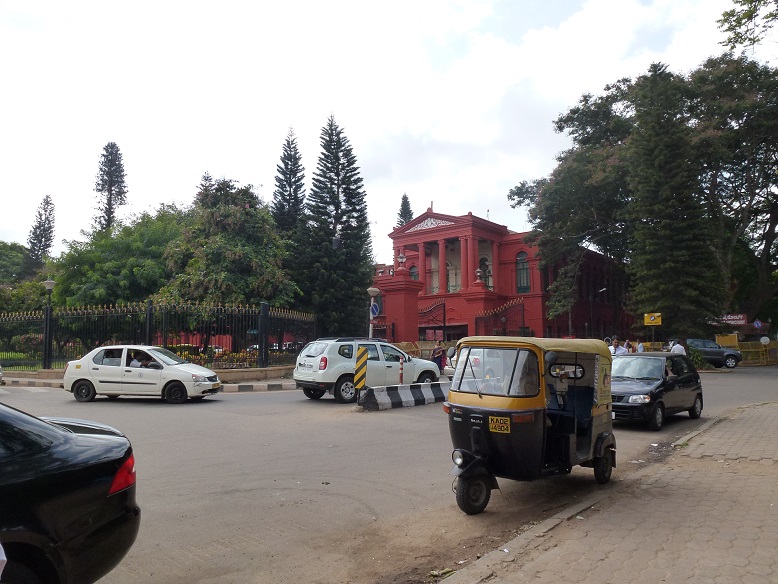
Situated opposite the Vidhana Soudha is the Attara Kacheri. The Attara Kacheri of Bangalore is a building housing the High Court, it dates back to the year 1867. One of the major attractions of the Attara Kacheri is its Gothic Style of architecture. It is a two-storied building, built in the European classical style. Also known as the High Court Building, it serves as the perfect contrast to the white columned building of Vidhana Soudha. Prema told me that the British loved to paint buildings red!
Attara Kacheri of Bangalore was built under the reign of Tipu Sultan, the Emperor of Mysore. It is said that during his time, the offices of the eighteen departments of Revenue and General Secretariat expanded to quite an extent. Since the palace could not house the offices, he ordered the construction of a new building, where the offices could be relocated. He named the building as Attara Kacheri, meaning eighteen offices or departments.
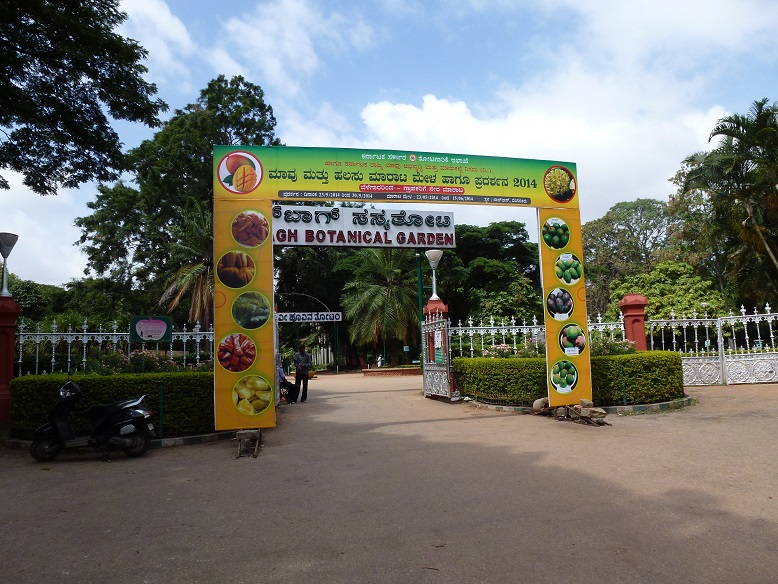
The city of Bangalore is known as the “garden city”, so it was only fitting that we visit one of these garden parks.
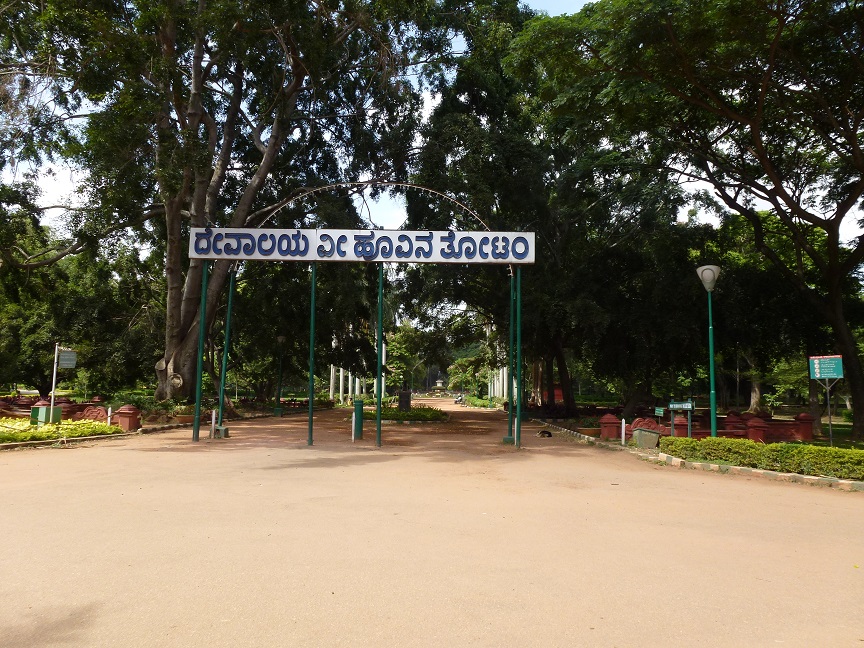
Cubbon Park which was next to the Attara Kacheri is officially known as Sri. Chamarajendra Park.
It is a historic park, located in the heart of city in the Central Administrative Area. The park provides sylvan surroundings to the State Legislature building- the Vidhana Soudha, the High Court Buildings – the Attara Kacheri and a number of other organizations located along the periphery and within the park which constitute the Central Administrative Area.
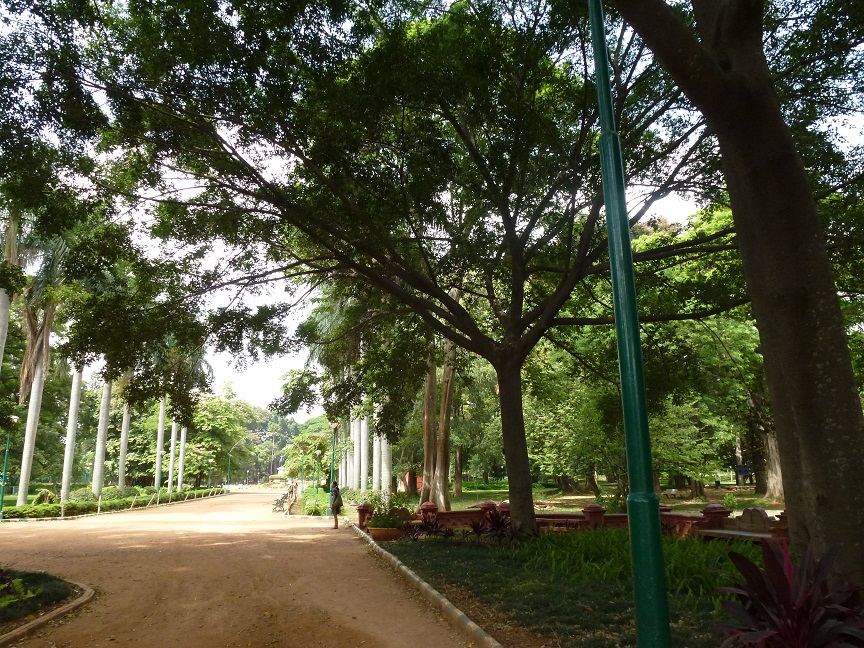
As we were walking across the grass towards this tree, the ground itself was covered with a layer of fallen leaves. Prema casually says to me, “Watch out for the cobras!” I replied just as casually back, “Oh, ok”. Then I laughed and she just as casually replys, “The last couple of times I have brought clients here, we have seen them.” “What!!! You are kidding?”, I asked. No she was serious. We did not see any, and I was actually a little disappointed, LOL. The tree really did produce beautiful flowers though.
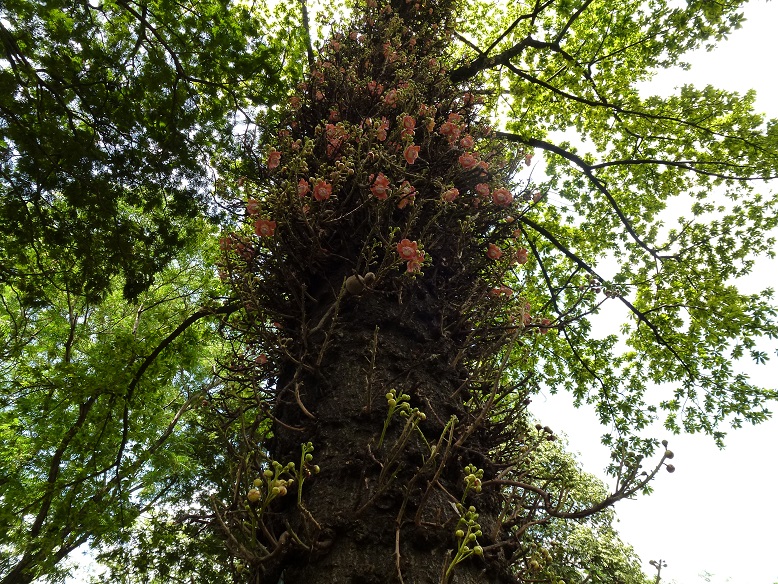
The Cubbon Park has a history of over 100 years. It was established in the year 1870 by Sri John Meade, the then acting Commissioner of Mysore. The vast landscape of the park was conceived by Major General Richard Sankey, the then Chief Engineer of the State.
Bangalore Cubbon Park 3
There were many flowering trees amongst the thick, lush greenery.
As a mark of honor to Sri John Meade, the park was initially named as “Meade’s Park” and subsequently it was called the Cubbon Park.
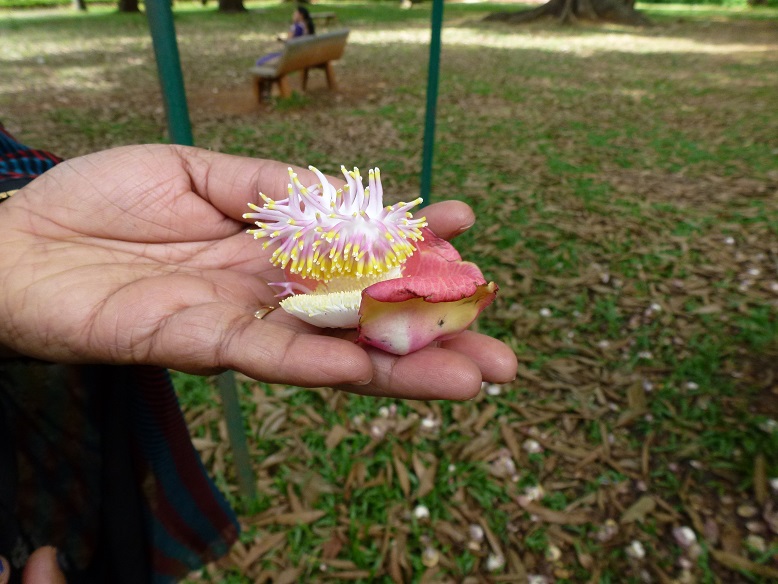
Since the inception of the park, it was developed and improved by adding new structures and features. This beautiful structure host many weddings and parties.
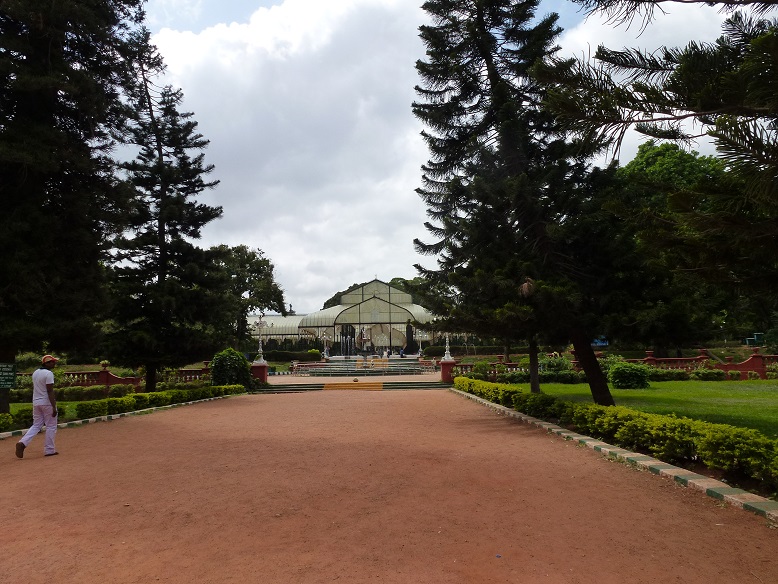
In the year 1927, the park was officially renamed as “Sri. Chamarajendra Park” to commemorate the Silver Jubilee of Sri. Krishnaraja Wodeyar’s rule in Mysore State. This picture shows a large area of granite. Most of the city of Bangalore sits on granite. Prema said she just had every counter surface in her home (I think she said she was living in father-in-laws home) just replaced with granite since it was so cheap there.
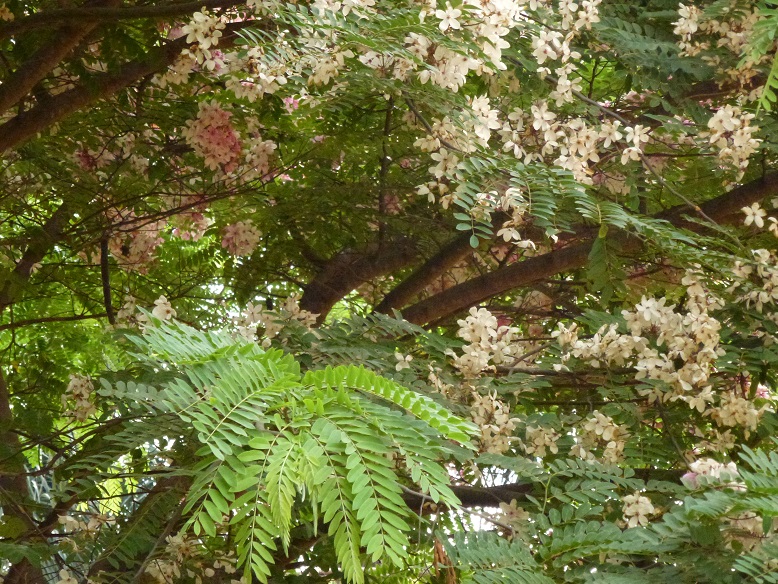
Our next stop was Bull Temple. Dodda Basavana Gudi (the Bull Temple) is situated in the N.R. Colony, Basavanagudi, area of South Bangalore. It is said to house one of the largest Nandi murthis in the world. The Hindu temple is inside a park called Bugle Rock. This temple is a great example of the Dravidian style, with layer upon layer that becomes smaller and smaller the higher up it goes.
The bull referred to is a sacred Hindu demi-god, known as Nandi; Nandi is a close devotee and attendant of Shiva. Dodda Basavana Gudi is said to be the biggest temple to Nandi in the world. The height of the murthi (refers to an image that expresses a Divine Spirit) is approximately 15 ft. (4.6 m) and it is approximately 20 feet (6.1 m) long.
The temple was built in 1537 by a local ruler under the Vijayanagara empire in the Vijayanagara architectural style. The ruler, a feudatory chief named Kempe Gowda, also founded the city of Bangalore.
The temple is named after the large granite Nandi monolith (a single rock or stone) placed on a plinth (a base or platform upon which a column, pedestal, statue, monument or structure rests) in the temple shrine (garbhagriha) which has become blackened from years of being rubbed with charcoal and benne (butter).
Along the plinth people leave “offerings”, sometimes flowers, sometimes food or they can draw pictures in honor of the deity or in this picture, decorate and offer a little “ganesh”.
All of the “living” shrines have a priest who gives blessings. Only the priest can go back to this area (picture) inside the temples. He says some prayers and then comes out to bless anyone who is waiting. It is really an awesome and very speical experience.
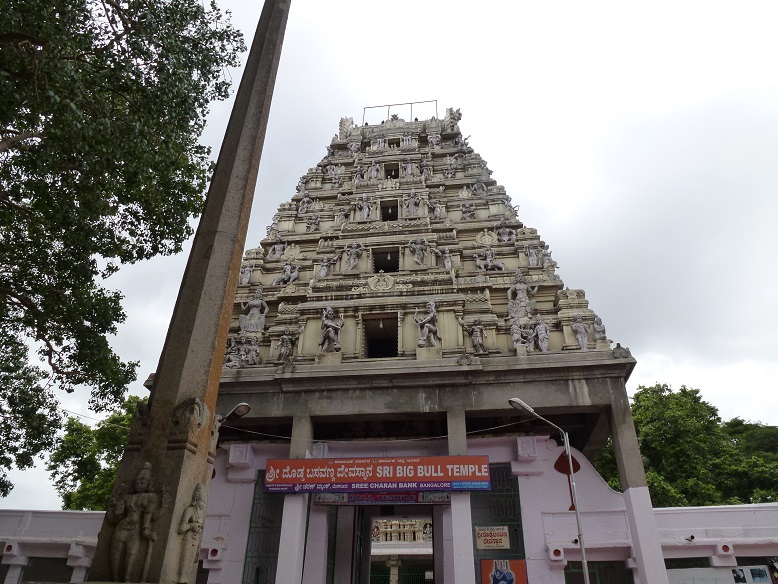
The current tower (vimana) over the shrine was constructed in the early 20th century and is adorned with Saivite (follower so Shiva) figures and motifs. This of course now spurs a major decussion on Gods and Goddesses and their manifestations. Poor Prema was going to earn her fee today! The decussion started here and ended two days later as she found it fun to quiz me on the information she was sharing. I won’t bore you with the details yet, but she had me at “Visnu”!
Okay, now I am starving…my brain is on overload and we need a break. Prema decides to take me to a small restauant that’s entry is down an alley, past an Indian “fast food” mart.
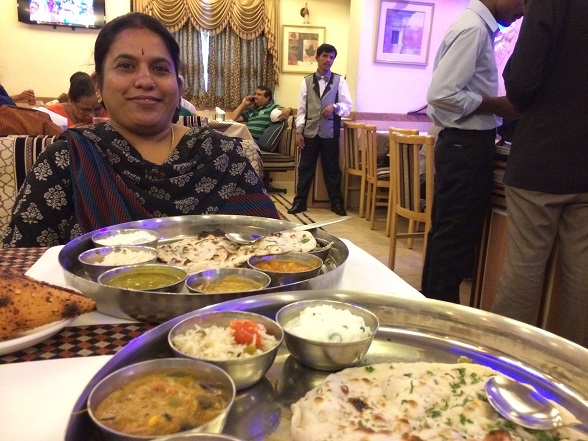
This is Prema with our beautiful lunch. We had three different curries, rice, yogurt, and nan. Eating meals that contain all 5 tastes is an Ayurvedic practice as well as making lunch the biggest meal of the day! Thank goodness because I was hungry and this was just perfect. Notice there are no forks! In Bangalore, we eat with our fingers. It doesn’t take long to learn this technique. At the end of the meal, the waiter brings a small bowl of warm water to wash your fingers.
Next blog will be about our afternoon…
